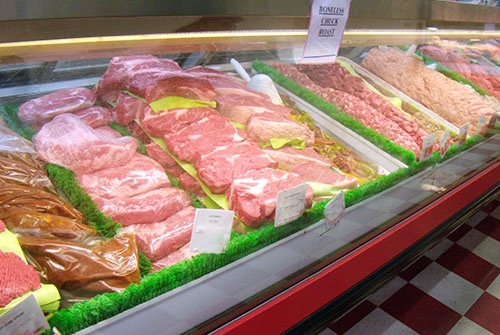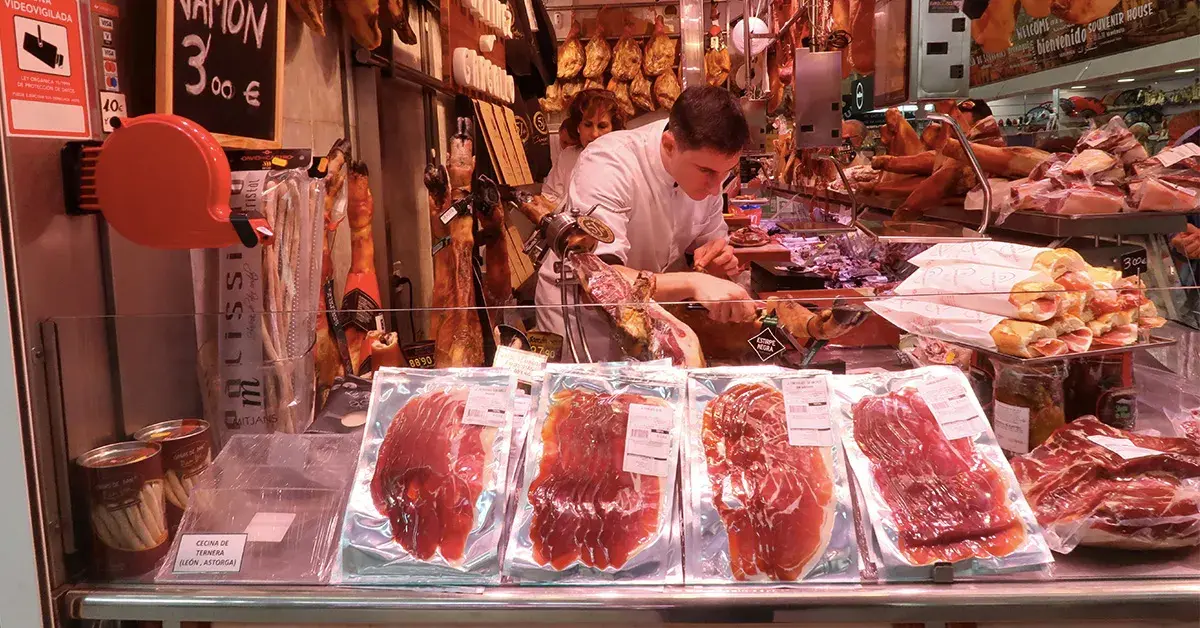Why Bagley Farms Meat Market Edwardsville IL Is the very best Choice for High Quality Meats
Why Bagley Farms Meat Market Edwardsville IL Is the very best Choice for High Quality Meats
Blog Article
Reveal the Art of the Butcher's Cut in a Modern Meat Market
In the ever-evolving landscape of modern-day meat markets, the butcher's cut has transcended its standard roots, combining age-old workmanship with modern methods. What absolutely sets the modern-day butcher apart is their ability to build a deeper connection in between consumers and the beginnings of their meat.
Advancement of Butchery Methods

The mid-20th century saw butchery strategies better fine-tuned by scientific insights right into muscle mass biology and meat aging, improving both tenderness and preference. Advancements like vacuum packaging and refrigeration expanded item shelf-life, allowing butchers to expand offerings and boost high quality control. This period likewise marked the rise of customized devices, such as band saws and meat slicers, which enhanced accuracy and effectiveness in meat processing.
The 21st century has actually introduced digital modern technology into the butchery world. Electronic systems now help in tracking pet provenance and optimizing cuts to fulfill particular customer preferences. Additionally, a renewal in artisanal butchery has arised, blending standard skills with modern-day knowledge to provide to consumers seeking moral and sustainable meat alternatives. This development emphasizes a dynamic interaction between custom and technology, meeting modern demands while protecting the craft's heritage.

Recognizing Meat Cuts

Recognizing the complexities of meat cuts is important for both butchers and consumers seeking high quality and worth. For butchers, accurate cuts mirror ability and respect for the craft, making certain minimal waste and ideal return.
The primary categories of meat cuts consist of primal, sub-primal, and retail cuts. Primal cuts, such as the loin, rib, and chuck, are the big areas originally separated from the carcass. Butchers then break these down further into sub-primal cuts, prior to finally generating retail cuts available to customers, like ribeye or tenderloin. Each phase needs mindful attention to physiological framework and muscle make-up.
Recognizing muscle structure is crucial; muscles utilized extra frequently by the animal have a tendency to be harder and are best suited for slow cooking approaches, while less-used muscular tissues, like those found in the loin, are much more tender and suitable for cooking or roasting. Knowledge with these distinctions empowers consumers to make educated options, boosting their cooking undertakings.
Picking Top Quality Meat
Picking the appropriate meat entails greater than simply choosing a visually appealing piece from the display screen. The art of picking top quality meat needs a critical eye and expertise of details qualities that symbolize freshness and excellence. Firstly, take notice of the shade; beef must have a bright, cherry-red hue, while lamb should show a soft pink tone, and pork a light pink. This dig this indicates the meat is fresh and hasn't been revealed to oxygen for as well long.
Secondly, take into consideration the marbling, which refers to the white streaks of fat within the muscle mass. Proper marbling is a crucial indicator of tenderness and flavor, as it melts during cooking, enhancing the meat's juiciness. Remember, higher marbling typically associates with exceptional high quality cuts, such as USDA Prime.
Appearance is one more essential element; meat should feel strong to the touch, not slimy or excessively soft. Additionally, be mindful of the aroma. Fresh meat ought to have a tidy, neutral scent, without any kind of sour or off-putting odors.
Coupling Cuts With Cooking Techniques
Efficiently pairing cuts of meat with the suitable food preparation methods is vital for attaining optimal flavor and structure. Various cuts differ in tenderness, marbling, and connective tissue material, each needing details techniques to unlock their capacity. Tender cuts like filet mignon and ribeye, with their intrinsic marbling, advantage from high-heat, quick-cooking approaches such as cooking or pan-searing. These methods enhance the meat's natural flavors and guarantee a juicy surface.
Conversely, harder cuts like brisket and chuck roast are abundant in collagen, which damages down into gelatin when cooked slowly. These cuts are ideal for braising or slow roasting, permitting the meat to soften with time and create deep, complicated flavors. Similarly, cuts such as brief ribs and pork shoulder prosper with slow-cooking approaches, where prolonged cooking times transform their robust appearances right into succulent dishes.
Lamb shanks click this link and oxtail, which call for long term food preparation to soften, are excellent prospects for cooking or sluggish simmering. These methods coax out rich, hearty flavors while preserving wetness. By recognizing the one-of-a-kind features of each cut, chefs and home cooks alike can boost their cooking productions, guaranteeing each meal is both satisfying and memorable.
The Butcher's Role Today
Browsing the evolving landscape of the modern-day meat market, the butcher's duty today prolongs beyond simple preparation of cuts. Contemporary butchers are cooking artisans, teachers, and advocates for lasting practices. They link the gap in between the ranch and the fork by ensuring moral sourcing, recognizing animal husbandry, and prioritizing openness in the supply chain. This change mirrors the expanding customer need for top quality over quantity, where provenance and animal welfare are critical.
Along with crafting precise cuts, butchers now engage straight with consumers, supplying cooking suggestions and tailoring selections to match specific needs and choices. Their competence in meat aging, marbling, and taste profiles empowers consumers to make enlightened decisions, boosting their culinary experiences. This customized service exemplifies get more the butcher's progressing duty as a relied on expert in the kitchen area.
Additionally, butchers are critical in reducing waste, making use of entire animals to produce varied items such as sausages and supplies - bagley farms meat market edwardsville il. This thorough approach not only values the animal but also aligns with contemporary sustainability goals. By doing this, the contemporary butcher symbolizes both tradition and innovation, adapting to an ever-changing market while preserving the virtuosity and stability of their craft

Final Thought
Proficiency in comprehending diverse meat cuts and quality signs empowers butchers to supply educated referrals, aligning certain cuts with optimal cooking techniques. By honoring historical practices while accepting modern demands, the butcher's role continues to be crucial in today's innovative meat market.
Report this page